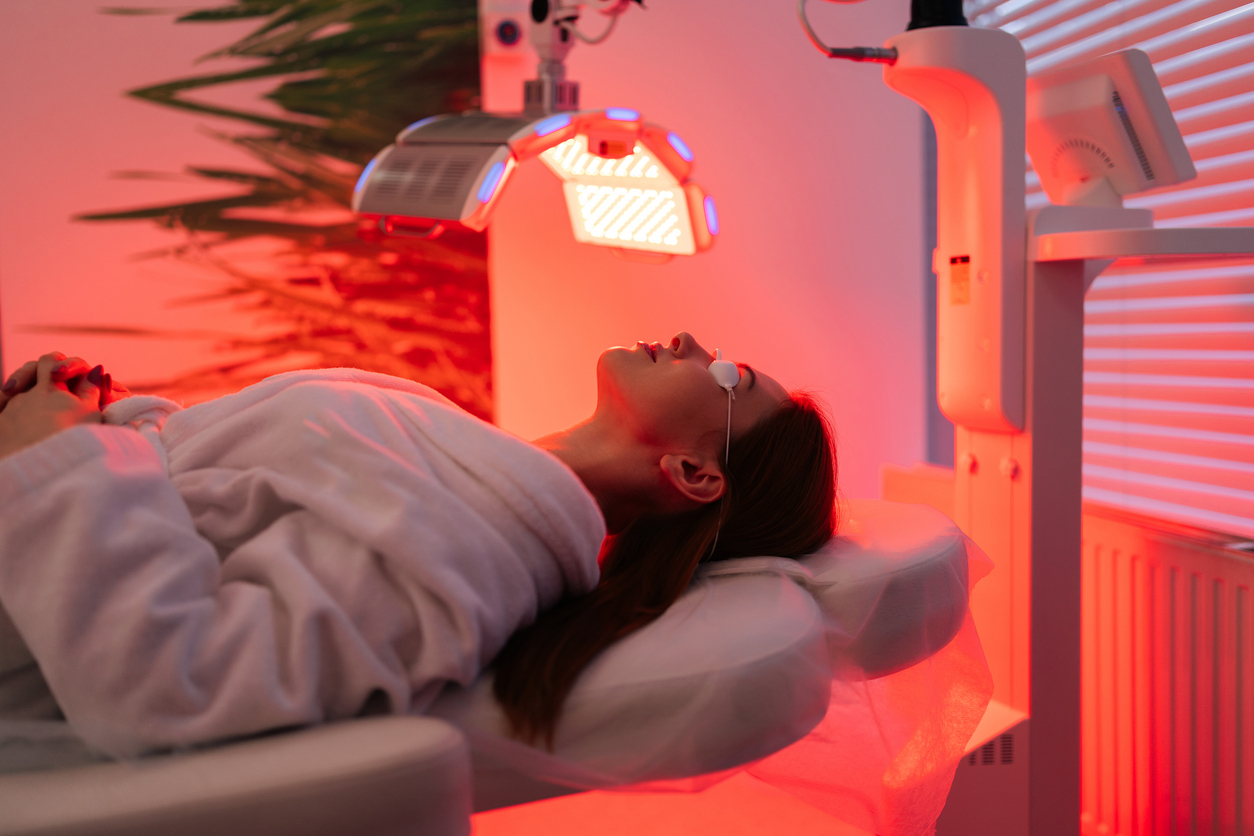2025-01-20
Beating the Winter Blues: Light Therapy in the Spotlight
Psychiatry
Seasonal Affective Disorder (SAD) is a type of depression that primarily
occurs in autumn and winter, when exposure to natural light decreases. This
lack of light disrupts the internal biological clock, or circadian rhythm,
which regulates sleep and hormone production, including serotonin and
melatonin. A decrease in serotonin is linked to depressive states, while an
excess of melatonin, exacerbated by the lack of light, can lead to excessive
sleepiness. These imbalances result in typical SAD symptoms, such as low mood,
persistent fatigue, increased need for sleep, cravings for carbohydrates, and
weight gain—symptoms that significantly affect the quality of life and daily
activities of those affected.
To address these imbalances, light therapy has emerged as an effective and popular solution. This method involves exposing patients to intense artificial light that mimics natural sunlight and is rich in the light spectrum. By directly influencing the reactivation of the circadian rhythm, light therapy helps restore disrupted biological cycles. It also stimulates serotonin production and regulates melatonin levels, thereby improving mood, reducing fatigue, and normalizing sleep patterns. Due to its demonstrated efficacy and simplicity of use, light therapy has become a leading treatment option for individuals with SAD.
Initial trials demonstrate that high-intensity morning light therapy—30 minutes per day for six weeks—is associated with a significant improvement in mood and a reduction in depressive symptoms. Similarly, medium-intensity light therapy—45 minutes per day for four weeks—showed a decrease in depressive symptoms, though the effects were less pronounced. A meta-analysis of 10 studies confirmed that light therapy is significantly more effective than placebo in reducing depressive symptoms in patients with SAD.
This study aimed to evaluate the effectiveness of light therapy on depressive symptoms associated with SAD. The findings reveal that light therapy, particularly when administered in the morning, significantly reduces symptoms compared to placebo. These conclusions, supported by a meta-analysis of 10 randomized controlled trials (RCTs), establish light therapy as a promising, non-invasive, and safe method for treating SAD.
For more insights: Beating the winter blues: when lifestyle makes a difference
However, limitations remain. The effectiveness of light therapy depends on factors such as intensity, duration, and timing of exposure. Barriers such as the cost of devices and the consistency of sessions may also hinder its adoption. Future research with larger samples and long-term follow-up is needed to better understand its impact and to develop broader clinical recommendations, thereby facilitating the integration of this method into comprehensive SAD management.
To address these imbalances, light therapy has emerged as an effective and popular solution. This method involves exposing patients to intense artificial light that mimics natural sunlight and is rich in the light spectrum. By directly influencing the reactivation of the circadian rhythm, light therapy helps restore disrupted biological cycles. It also stimulates serotonin production and regulates melatonin levels, thereby improving mood, reducing fatigue, and normalizing sleep patterns. Due to its demonstrated efficacy and simplicity of use, light therapy has become a leading treatment option for individuals with SAD.
When Light Defeats the Blues: Proven Effectiveness
This study investigates the effect of light therapy on depressive symptoms in patients with SAD. To this end, a group receiving light therapy was compared to a control group receiving either a placebo (exposure to low-intensity light) or standard treatment. Depressive symptoms were measured at various stages—before the start of treatment, during the intervention, and after—to evaluate progress over time. These assessments were conducted using validated and recognized clinical scales, such as the Beck Depression Inventory and the Hamilton Depression Rating Scale, ensuring the reliability and comparability of results.Initial trials demonstrate that high-intensity morning light therapy—30 minutes per day for six weeks—is associated with a significant improvement in mood and a reduction in depressive symptoms. Similarly, medium-intensity light therapy—45 minutes per day for four weeks—showed a decrease in depressive symptoms, though the effects were less pronounced. A meta-analysis of 10 studies confirmed that light therapy is significantly more effective than placebo in reducing depressive symptoms in patients with SAD.
Illuminating the Future of SAD: A Promising Solution
SAD is a form of depression caused by the lack of light in winter, leading to debilitating symptoms such as fatigue, low mood, and sleep disturbances. This condition significantly impacts quality of life and requires effective treatments to mitigate its effects.This study aimed to evaluate the effectiveness of light therapy on depressive symptoms associated with SAD. The findings reveal that light therapy, particularly when administered in the morning, significantly reduces symptoms compared to placebo. These conclusions, supported by a meta-analysis of 10 randomized controlled trials (RCTs), establish light therapy as a promising, non-invasive, and safe method for treating SAD.
For more insights: Beating the winter blues: when lifestyle makes a difference
However, limitations remain. The effectiveness of light therapy depends on factors such as intensity, duration, and timing of exposure. Barriers such as the cost of devices and the consistency of sessions may also hinder its adoption. Future research with larger samples and long-term follow-up is needed to better understand its impact and to develop broader clinical recommendations, thereby facilitating the integration of this method into comprehensive SAD management.

Last press reviews
The real role of diet after prostate cancer: what does the evidence show?

By Lila Rouland | Published on November 6, 2025 | 3 min read<br>
Prostate cancer and diet: which eating pattern helps with prevention?

By Lila Rouland | Published on November 6, 2025 | 3 min read<br>&...
Curcumin in prostate cancer: a promising therapy supported by nanotechnology

By Carolina Lima | Published on November 4, 2025 | 3 min read<br>